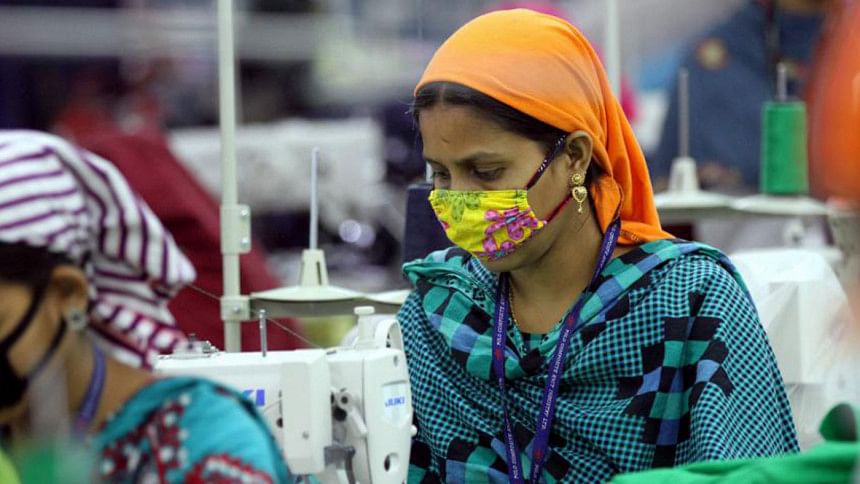The changing face of Bangladesh

As the sun starts setting on 2015, it is perhaps time to give a look at how well Bangladesh fared economically this year. The country abounds with sceptics and political doomsayers. And yet there seems to be chinks of light penetrating the opaque glass that surrounds these doom mongers.
2015 saw complex political turmoil in Bangladesh. There were also structural constraints that soured economic growth inside the country. Moreover, 'global volatility' also presented a threat to the country. People began the year with dread and a sense of hopelessness. Yet as days passed, the country witnessed macro-economic stability. This spurred the country's GDP growth and reduced poverty. This year the country stepped into the low middle income status, shedding for all practical purposes the least developed economy status. This was more than a generational change and we started to regain our confidence as we pulled out of the economic morass.
But challenges do remain; these challenges include political uncertainty, infrastructure deficits such as poor roads, ports and airports as well as a poor service sector. Regulatory obstacles also bedevil growth planners. Yet, neither the government nor the people of Bangladesh seem to be disillusioned. The nation worked hard to ensure capacity utilisation. This pushed various sectors to concentrate on investments. As a result, internal investments gradually picked up. Employment figures were on the increase. About 1.3 million jobs were created and added to the economy. This also helped to depress inflation and by the end of the year, prices not only stabilised but also reduced. The fall in international commodity prices, especially cost of petroleum products, added to a stable economic growth. The increased participation of women, thanks to widespread education for girls over the past few years, also gave substance to form. The most striking part of all of this is that a job friendly growth momentum is starting to be visible within the country.
There are several other areas where the Bangladesh economy is doing well. Significant is the improvement in the balance of payments situation despite the deficit in the current account. The reason lies in continuous injection of foreign exchange in the economy, due to increased foreign remittance every month by Bangladeshis working abroad. The figures could be close to $1.5 billion each month. Add to this the induction of foreign exchange earned by exports, especially readymade garments. Bangladesh shot up to be the second largest exporter of readymade garments in the world, following only China. Of course the government must be credited for having a consistent fiscal policy. This has allowed macroeconomic stability in the economy. The relentless search for new markets for our readymade garments around the world has also spiked the economy. However, do not forget that the recent fall in international oil prices could have brought greater dividends to the economy. But the government in order to recoup its past losses due to heavy subsides given to national oil suppliers continues, for the moment, to charge exorbitant price for petroleum supplies. This has put inordinate pressure on people's domestic budget.
2016 promises to be another critical year for the Bangladesh economy. This time the government needs to increase the annual GDP growth from an average of 6 percent per annum to about 7.5 to 8 percent in order to reach the status of a middle income country. But this means greater investment in order to create better and more jobs. More women need to be inducted in jobs and business organisations through training programmes. Institutional barriers need to be reduced so that more and more young women can join the labour and entrepreneur market. At the same time, the country needs to shift from agriculture to higher productivity industries as well as the service sector. Simultaneously, Bangladesh needs to pilot its demographic growth so that it does not lose its demographic dividend. Induction of more women in the workforce will allow Bangladesh to continue with this dividend.
The year ahead will be challenging, as the economy needs to attract large scale private investments in its industries and the service sector. Special Economic Zones is the need of the day. The government has therefore proposed to set up 100 such zones. But this means that an excellent regulatory environment needs to be created. It has to ensure financial sector accountability as well as exchange rate flexibility. When this is on the way, the government has to ensure connectivity both within and outside the country. Recently, the government penned agreements with India, Nepal and Bhutan to ensure better connectivity by land and sea where feasible. But such connectivity needs to be established with China as well as Myanmar.
Bangladesh is now at a historical crossroads. 2016 will be crucial for deepening and widening the Bangladesh economy. For this we need to bring changes in our foreign and economic policy as well as our regulatory system. Politics, for long, has been a bane to our growth. Yet it is recognised that politics is the grease that can ease growth. Our politicians now need to act with great wisdom without any pettiness. If the past is any proof, Bangladeshis have suffered greatly because of the narrow and partisan approach of politicians to growth. 2016 should be different. We must ensure that politics is turned to a possibility of growth and prosperity.
The writer is a retired ambassador and columnist of The Daily Star.
E-mail: [email protected]

 For all latest news, follow The Daily Star's Google News channel.
For all latest news, follow The Daily Star's Google News channel. 



Comments